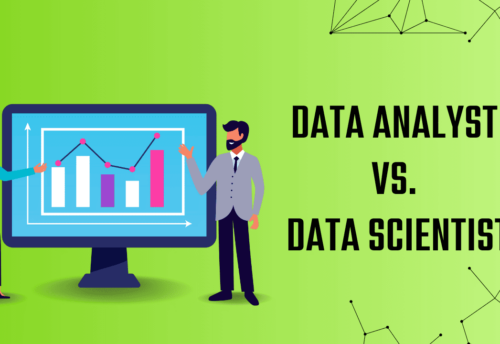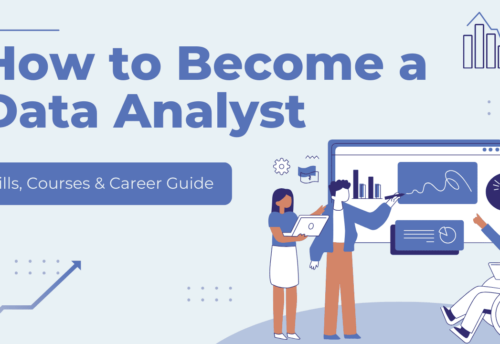
What is Data Analysis? A Beginner’s Guide to Getting Started
No matter if you are in business, technology, healthcare, or any industry, data analysis is important for decision-making and for enabling growth. Data analysis is an ideal place to start if you are considering a career that bridges technology and business intelligence.
But before going too deep, what is data analysis and how can you take your first steps into this interesting topic?
What is Data Analysis?
Data analysis is a process of inspect, cleans, transforms, and model data with the goal of discovering useful information, concluding and supporting decision-making. It includes a multi-stage process, beginning with raw data collection, and ending with the interpretation of patterns and trends that can lead to improved business strategies, more efficient operations, or improved customer experiences.
As organizations scale, they generate large amounts of data. The data could include information from a range of sources such as websites, mobile applications, sales transactions, customer feedback and much more. A data analyst endeavors to make sense of this complex data, and find ways to present it as legible and actionable information for decision-makers.
Why Is Data Analysis Important in the Current Era?
Data analysis has become a key foundation for business success in today’s digital economy. Data analysis allows businesses to:
• Making Better Decisions: By analyzing data, businesses can make data-driven decisions and avoid the risks that gut-feeling based strategies carry.
• Improve Efficiency: Data analysts can help organizations improve efficiency by identifying patterns and trends to optimize processes, reduce costs, and streamline operations.
• Improve Understanding of Customers: Data mining helps in identifying the behavior, preferences, and buying patterns of customers, which helps organizations customize products and services accordingly.
• Forecast Future Trends: Predictive analytics help businesses to predict trends and prepare for a shift in the market, improving overall performance.
Key Types of Data Analysis
• Descriptive Analysis: Takes a look at historical data to understand what has occurred. It is used for the past and typically consists of summarizing the data into reports or visualizations.
• Diagnostic Analysis: This type of analysis is performed to identify the reasons behind the occurrence of certain events or the behavior of certain data after observing the data trends. It emphasizes seeking to get at root causes.
• Predictive Analysis: Predictive analysis uses statistical models and machine learning algorithms to forecast future events. Businesses can predict shifts in demand from customers or in the marketplace.
• Prescriptive Analysis: It provides solutions. It offers data-driven insights and actionable recommendations, helping businesses make informed decisions.
Introduction to Data Analysis
If you want to pursue data analysis either as a career or a skill, here’s a beginner’s guide on how to start.
• Pick up basic knowledge of Statistics and Math’s
• Therefore, data analysis requires a lot of statistical and mathematical methods. The first thing to do is understand some of the basic concepts of this:
• Standard deviation and variance: Measuring the spread and dispersion of data.
• The hypothesis testing: A procedure that tests the assumption or theory based on the data.
Know the Tools and Software
Generalized tools and software will not serve the purpose of data investigation or analysis. Common Tools that everyone seems to use include:
• Excel: A simple application to do basic data analyses with sorting, filtering and simple charts.
• SQL — Structured Query Language this is a language used for working with databases.
• R and Python: These are programming languages that can be used for more complex data analysis. Python, for instance, has powerful libraries such as Pandas and Numbly that facilitate data manipulation and analysis, while R is the primary choice when it comes to academic and statistical applications.
For example, Tableau and Power BI are data visualization tools that you can use to create interactive dashboards and present your data insights in an easy-to-understand format.
Data Collection and Cleaning
You will first have to obtain and clean the data before you begin the actual analysis. Specifically, since raw data may be missing, inaccurate, or inconsistent, one of the most critical steps in the data science process is data cleaning. This involves:
Removing duplicates: Identifying and eliminating repeated entries.
The treatment of missing data: The replacement or deletion of records with missing values.
This would involve standardizing formats so that (e.g. date formats) is the same and is consistent wherever it is present in the organization.
After cleaning your data, the next step is to analyse it. This is the part where you make statistical methods, visualizations and problem you might use python or R and deep diving into it. You, the data analyst, need to make sense of it, convert it into something that makes sense, something that can be reasoned about and acted upon.
Present Your Findings
Communicating your results: How to show your work It is crucial to communicate these findings in a clear and actionable way. This may include:
Visual representations: Charts and graphs (such as bar charts, line graphs, and scatter plots) to showcase trends and comparisons.
Report: A written document that summarizes your analysis and conclusions.
Presentations: Slide decks (PPT) or something used to present your results to the stakeholders.
Data Analysis – Full Stack Web Development
Exploring full stack web development if you want to combine data analysis with other technical skills. A full stack web developer is proficient in both frontend development and backend development, allowing you to build dynamic web applications that create and analyze data.
Frontend Development: It is the In-web development that users directly interact with. It includes technologies such as HTML, CSS, and JavaScript. Having a reasonably good knowledge of frontend development would provide you with the knowledge to visualize and present the data in an effective manner.
Backend Development: The backend is the server-side portion of a web app, responsible for processing, storing, and managing data. Tools like Node. Backend: Node. js, Python, Ruby on Rails, etc. A background in backend technologies means you can create systems that can make use of them, effectively collecting and storing data for analysis.
As a full stack web developer, the addition of data analysis skills allows for involvement in both the development and analysis sides of a web project, providing valuable insights that inform the development process to enhance user experiences and business outcomes.
Why You Should opts the Data Analyst Career
The field of data analytics is expanding exponentially, and if you are seeking a fast-paced and ever-evolving field, then a data analyst role could be the perfect match for you. Being able to read and make sense of the data has become vital to almost every organization, and the requirement for data professionals, who are skilled, is increasing. Additionally, full stack web developer careers have the benefit of further combining data analysis - asserting you as someone who can build and analyze the tools you create.
• Top Skills Needed for a Data Analyst Career:
• Problem-solving: The capacity to break down complex issues and evaluate information in a logical manner.
• Data– Attention Determination: Accurate and precise data.
• Developing communication skills: Obtaining the ability to explain intricate results in an understandable and executable way
• Technical proficiency: Knowledge of programming languages, data visualization tools and databases
With companies increasingly depending on data to drive decision-making, a data analysis career can be stable, lucrative and have plenty of room for growth.
Conclusion
Data analysis is a lucrative and powerful skill which opens a pathway to many careers, such as full stack web developer. With the knowledge of both technical and analytical skills, you can help meet the increasing demand for professionals who can transform raw data into actionable insights. Whether you are a beginner or an advanced learner, data analysis can give you that extra edge in today’s world driven by data.




Leave a Comment